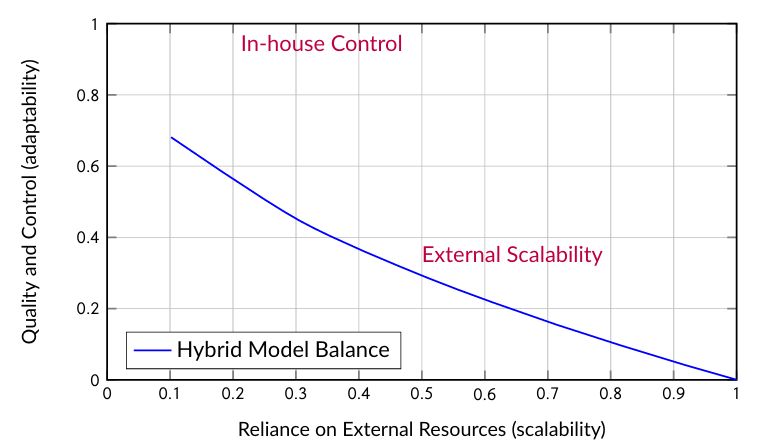Comparative Analysis of Content Production Models and the Balance Between Efficiency, Quality, and Brand Consistency in High-Volume Digital Campaigns
Main Article Content
Abstract
High demand for large volumes of digital content has driven great strides in content production models, especially in the area of efficiency, quality, and brand consistency. This paper provides exploratory analysis of the content production frameworks comparing in-house teams, outsourced models, and hybrid approaches in assessing how each model manages these competing priorities. With the increased demand to satisfy time-sensitive campaign requirements, efficient production cycles are a must. However, achieving high efficiency usually risks compromising quality and consistency, potentially affecting audience engagement and brand loyalty. Below is an overview of operational mechanisms for each model: automation, collaborative tools, and workflow structures, with an assessment of their implications concerning scalability, quality assurance, and brand alignment. In-house models provide controlled environments to enforce brand consistency but usually demand higher resource investments, which result in lower abilities to scale. Outsourcing to specialized agencies might deliver high efficiency and permit rapid scaling but often becomes unwieldy in terms of enforcing brand standards. Hybrid models—overseeing in-house while executing outside—offer a potential solution but remains complex in terms of coordination and quality control. This analysis synthesizes recent literature, case studies, and theoretical perspectives in the context of high-volume campaign settings that investigate how these models manage the trade-off between speed, quality, and consistency. The results show that both efficiency and quality can be achieved through automation and collaborative content management platforms, but their performance in terms of brand consistency differs across models. This paper infers that, although no model has proved uniformly superior on all dimensions, the hybrid models with adaptive quality control mechanisms may offer the best balance for brands needing largescale content under extremely strict brand standards.
Article Details
Public Licensing Terms
Thank you for your interest in our published work. We are committed to promoting open access and the free dissemination of knowledge. In line with this, we have established the following public licensing terms that govern the use and distribution of our published works:
-
Creative Commons License: All our published works are licensed under the Creative Commons Attribution-NonCommercial-ShareAlike (CC BY-NC-SA) license, unless otherwise specified.
-
Permissions Granted: a) Attribution: You are free to share and adapt the work, provided that you give appropriate credit to the author(s) and provide a link to the original source. b) NonCommercial: You may not use the work for commercial purposes without obtaining explicit permission from the copyright holder. c) ShareAlike: If you remix, transform, or build upon the work, you must distribute your contributions under the same CC BY-NC-SA license as the original work.
-
Compliance with License Terms: When using or distributing our published works, you must comply with the terms of the CC BY-NC-SA license and ensure that proper attribution is given to the original author(s).
-
Commercial Use: If you wish to use our published works for commercial purposes, you must seek permission from the copyright holder. Please contact us at [insert contact information] to discuss commercial licensing options.
-
Third-Party Rights: Our published works may contain third-party content or materials. The licensing terms for such content may vary, and you are responsible for complying with any additional terms or restrictions imposed by the respective copyright holders.
-
Disclaimer: The published works provided under these licensing terms are intended for informational and educational purposes only. We do not guarantee the accuracy, completeness, or suitability of the content, and we shall not be held liable for any errors, omissions, or damages arising from the use of the published works.
-
Termination: We reserve the right to terminate or modify the licensing terms for our published works at any time without prior notice. However, any works published prior to the modification or termination will continue to be governed by the original licensing terms.
By accessing, using, or distributing our published works, you acknowledge and agree to be bound by these public licensing terms. If you have any questions or require further clarification regarding the licensing terms or permissions, please contact us at permission@publications.dlpress.org
Last updated: 05-02-2023
